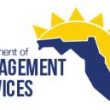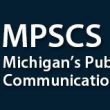Almost-final LMR licensing numbers show 2018 gains for enterprises, an all-time low for public safety
Overall LMR licensing activity increased slightly in 2018, with a gain in business-industrial licensing activity offsetting the second consecutive record-low year of public-safety licensing to narrowly exceed overall 2017 numbers. Despite this, the overall 2018 LMR licensing figures are the second-lowest mark this century.
According to the FCC’s Universal Licensing System (ULS) database, the FCC has granted a total of 13,881 LMR applications that were filed in 2018, with 38 applications still pending. If all pending applications are granted, the final total would represent a 1.8% increase when compared to 2017.
These figures include 10,691 granted applications in the business-industrial sector—a 4.3% increase compared to 2017. No matter how many of the remaining 30 pending applications are granted, the 2018 LMR activity represents the second-lowest level in the 19-year history of the FCC’s online ULS database.
Meanwhile, public-safety LMR licensing activity set an all-time low in 2018 for the second consecutive year. Even if all 8 remaining applications were granted, only 3,198 public-safety LMR licenses that were filed 2018 would be approved. This result would represent a 6% decrease when compared to the 2017 figures, which established a record low at the time.
The last four years represent four of the five years with the lowest levels of public-safety LMR licensing activity, with the 3,530 granted applications in 2001—the last year before post-9/11 funding helped spark public-safety LMR initiatives nationwide—becoming the third-lowest total since the ULS was established online.
If all pending applications are granted, the 3,198 public-safety licenses would represent a 69.8% decrease from the 10,602 applications granted in 2012, when first-responder agencies were working to bring their LMR systems in compliance with the FCC’s narrowbanding mandate—a well-known “bubble” of activity in the industry. Perhaps more relevant is the fact that 3,198 licenses would represent a 24.7% decrease in public-safety applications granted compared to 2015, a post-narrowbanding year when 4,248 licenses were approved.
Most industry sources have blamed the slowdown in LMR activity on the availability of push-to-talk-over-cellular (PoC) technology that provides a push-to-talk alternative to LMR. In the public-safety arena, mission-critical-push-to-talk (MCPTT) services are not yet offered commercially, but many sources have indicated that elected officials are hesitant to build or upgrade existing LMR systems—typically a 10-year or 15-year financial commitment—until they can evaluate MCPTT offerings and determine whether LTE offering is viable alternative to LMR.
AT&T officials have expressed hope that FirstNet subscribers will be able to subscribe to MCPTT services from multiple providers during the second half of this year, although a FirstNet representative in December said that AT&T is not contractually obligated to make unicast MCPTT available until March 2021.
So far, there have been no signs of a turnaround in LMR licensing activity during the first quarter of 2019. As of April 2, the number of business-industrial LMR licensing applications—including pending applications—slightly trails the business-industrial total for the same period in 2018.
A more dramatic trend has developed in the public-safety space. Currently, the number of possible public-safety LMR applications filed this year represents a significant 23.2% decrease from the 2018 pace that resulted in an all-time low in LMR licensing activity for the sector.
It should be noted that these numbers represent only the first quarter of the year. In addition, the federal-government shutdown early this year halted LMR licensing activity for weeks, although that should have slowed the pace of LMR licenses being approved, not the number of licensing applications.

















